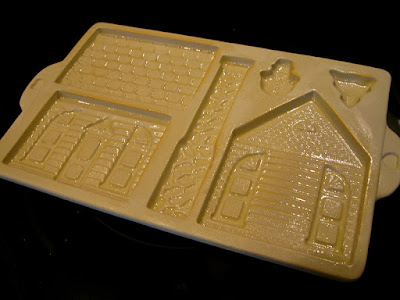This is what happens since I work in a giant petri dish: an elementary school. Granted, my immune system has become much stronger in the past few years and I've learned a few tricks of the trade. During cold and flu season, I use Clorox wipes on the table surfaces daily and I pass around the hand sanitizer every few hours. We use disinfecting spray around handles and doorknobs and I encourage kids to keep their hands away from their faces, but illness is inevitable. The germs spread and the kids get sick every winter. The empty seats are a constant reminder to me that we need to pass around the sanitizer again and discuss the elbow sneeze technique. Covering your mouth with your hand is out. Elbows are in.
When you're a teacher, it's tough to be sick. It's not that we hate to be out of the classroom for a day or two; it's that taking a day off requires several additional hours of work before you're gone and again after you come back. So many teachers just keep on working through their illness because getting a substitute, writing lesson plans, prepping the materials, and warning all the necessary individuals takes more effort than just trucking through the school day with a tissue wad up your nose.
I'm guilty. While I took a sick day on Thursday to moan and groan on the couch, I attempted to return on Friday. I whispered with my dry, crackly voice throughout the day, popped DayQuil like candy, and kept a box of tissues nearby. I could barely talk loud enough to get the attention of my students, and yet somehow they understood and responded appropriately. Kids sense when you're vulnerable and sick. They get it. My class was uncharacteristically sensitive this week and I'm really glad I got to see the sweet, nurturing side of individual students as well as the whole group. They were great listeners. They noticed my gestures more than usual. They asked fewer questions of me and instead helped each other. They entertained themselves when they finished early instead of nagging me with "now what?!" comments. They were more responsible with their routines and classroom jobs and made me very proud. One tender little guy recognized how sick I felt first thing in the morning and said, "What can I do to help you?" before he even took his backpack off. Isn't that sweet?
While I can complain about being sick and the hassle of writing sub plans, I also have to admit that this week I appreciated my job. I get to spend all day with young people who are learning to be empathetic and responsible. Who am I to guide them through this journey? Well, I'm lucky. That's what!
If you are on your own empathy quest, make this potpie for someone in your life who is sick right now. It's warm and comforting, and it's a nice break from chicken noodle soup. It's chicken potpie for the soul.
Puff Pastry Chicken Potpie
adapted from Williams-Sonoma Bride & Groom Cookbook
2 Tbsp. olive oil
4 shallots, diced
1 c. peeled, diced carrots
1 c. diced celery
2 c. peeled, diced russet potatoes
1 bag frozen mixed vegetables (corn, peas, carrots, green beans)
3 c. chicken stock
2 c. shredded chicken meat
1 c. pearl onions
1 tsp. finely chopped fresh sage
1 tsp. thyme
1 tsp. celery salt
3 bay leaves
kosher salt and pepper
2 Tbsp. butter
3 Tbsp. all-purpose flour
1/3 c. heavy cream
1 sheet frozen puff pastry
Heat the olive oil in a medium saucepan over medium heat. Add the onions, carrots, and celery. Sauté the vegetables until slightly softened, 4-5 minutes. Add the potatoes and frozen vegetables and sauté, stirring often for 3-4 minutes. Add the stock and bring to a boil. Lower the heat to medium low and add the shredded chicken and delicate pearl onions. Bring to a gentle simmer. Gently stir in the fresh sage, thyme, celery salt, bay leaves, and salt and pepper to taste. Simmer for 10 minutes.
Meanwhile, make a roux by melting 2 Tbsp. butter over low heat in a small saucepan. Add the flour and stir constantly with a wooden spoon to mix thoroughly Cook, stirring constantly for 3-4 minutes. Do not allow the roux to brown. Add the cream and stir vigorously until the mixture thickens. Stir the roux into the chicken and vegetable mixture and simmer gently for 5 minutes. It should thicken slightly. Check the potatoes for doneness; they should be cooked through, but not mushy. Taste and adjust seasoning with salt, pepper, sage, thyme, or celery salt as needed. Remove the bay leaves from the mixture before pouring it into a 9 x 13" baking pan. The dish can be prepared up to this point one day in advance or frozen at this stage for future use.
Preheat the oven to 400 F. Remove a sheet of prepared puff pasty from the freezer at least 10 minutes before using it so it will thaw. Cover the 9 x 13" dish with the pastry just before you put it in the oven. Make several incisions in the pastry with a paring knife to allow steam to escape. Do not allow the pastry to sit for long at room temperature on top of the creamy chicken mixture as it will become soggy. Place the potpie in the oven and bake until the pastry is golden brown, about 20 minutes. Let cool for a few minutes before serving.









































































